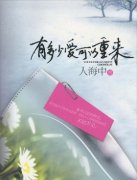北海道冬季野生动物(Hokkaido Winter Wildlife)
编辑:高中作文网 阅读 次这是一片霜封的舞台,汇集了丹顶鹤,大天鹅,梅花鹿,雪猴等动物。日本能够将他们对动物的古老崇敬转化成现代的动物保护吗?
In other seasons there might be 20 of us and only a few of them. But now, in the heart of winter, there are 20 of us and 150 of them. We are Homo sapiens, a gaggle of bird-watchers, scientists, and photographers; they are Grus japonensis, the rare and celebrated red-crowned crane.
如果是在别的季节,我们这边的人马大概会有20个,而对方只会有几个。但是现在正值隆冬,我们这边的数目还是20,对方却增加到150。我们是人类,一群嘈杂的赏鸟人士、科学家和摄影师;它们则是Grus japonensis,也就是罕见而知名的丹顶鹤。
The field is white and the wooded edges dark with evergreen. Out in the open in the fine snow of Hokkaido cluster the great white cranes, the black tertial plumes of their broad wings arranged over their rumps like elegant bustles. Known in Japan as tancho (red peak), the red-crowned is the second rarest crane species, after the whooping crane, with a world population of fewer than 2,500 birds. It is in other seasons fiercely territorial, but now the birds are gathered in one clangorous flock to scoop up the winter feed laid down for them by farmers. Some stalk the field or stand in pairs, lifting their bills to trumpet a shrill, rolling cry, a "unison" call that carries across the fields. One flares its wings and arches its back in a dramatic threat display to relieve the tension of crowding. A swoop of six arrives on motionless wing from their roost site in a nearby river, drop lightly to the ground amid the others, and lower their heads to pluck the scattered corn, flashing their brilliant caps of crimson like blood on snow.
野地上银白一片,远处围绕着暗绿色的常绿树木。在北海道的旷野上,丹顶鹤群聚在柔细的白雪上,它们双翅上醒目的黑色羽毛优雅地围在尾部,很像贵妇优雅的裙撑。丹顶鹤是世上第二罕见的鹤,仅次于美洲鹤,目前全球幸存数量低于2500只。在其它季节中,它们的领土意识很强,但现在它们喧闹地聚集成群,抢着享用农夫为它们准备的冬季美食。有些鹤在原野上高视阔步或成双站立,仰头发出尖锐响亮的叫声,这是鹤的“齐鸣”,声音响遍四野。有一只丹顶鹤展翅拱背,摆出威吓的姿态以纾解拥挤的压力。六只丹顶鹤从附近河中的巢址翩然而至,轻盈地在其它鹤群之间落地,低头啄食四散的谷粒,露出一顶顶艳红色的头冠,一如雪中之血。
The Japanese have a word, aware, for the feelings that arise from the poignant beauty of an ephemeral thing. The word refers not to the fragility or loss of the thing itself, but to the human feelings evoked by its passing. Those of us pressed against the rail are elated and grateful for this close look at the cranes concentrated here like a vision—and which, like a vision, may just as quickly vanish. No wonder people fly halfway around the world, board buses and trains and ferries, and wait patiently in the heavy snow to see these birds gather to preen and flare and dance their wild courtship dances. No wonder the crane is revered by the Japanese and so admired that their art never tires of representing it.
日本人用“哀”这个字来形容美丽却短暂易逝的事物给人的感受。这个字指的不是事物本身的脆弱或消逝,而是指它的消逝在人心中激起的情感。我们紧贴着栏杆,心中充满喜悦与感激,只因我们能在近距离欣赏如梦似幻的鹤群──而且正如梦幻一般,它们很可能迅速消失。难怪有人愿意飞越大半个地球,搭公车、火车和渡船前来,耐心地在大雪中守候,只为欣赏这些鹤整理羽毛,展翅跳着热烈的求偶之舞。也难怪日本人如此尊崇丹顶鹤,并且永不厌倦地透过艺术表现对它们的欣赏。
Only in Japan's winter does this spectacle occur, and others as well, a striking assemblage of animals, from cranes and eagles to snow monkeys and sika deer, that endure the season's hard tenancy in small refuges, natural and man-made, on Hokkaido and in the mountains of Japan's main island, Honshu. Some of the animals that take shelter in these spots are abundant, even overabundant; others are rare, having been hunted to the brink of extinction or chivied out of their last natural redoubts by human pressures. Some are in the winter of their existence and endure only through the courageous efforts of a few people working against great odds.




